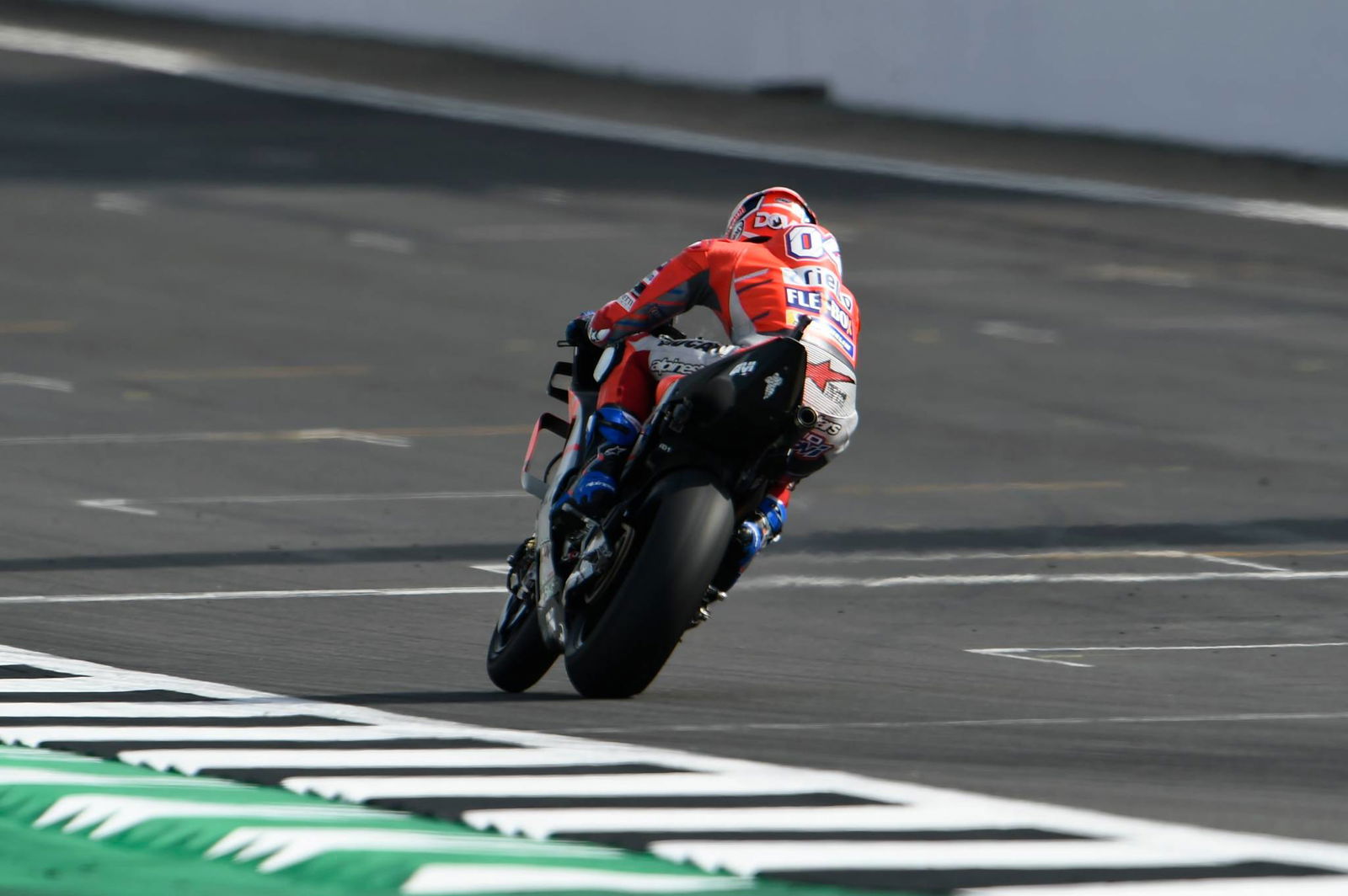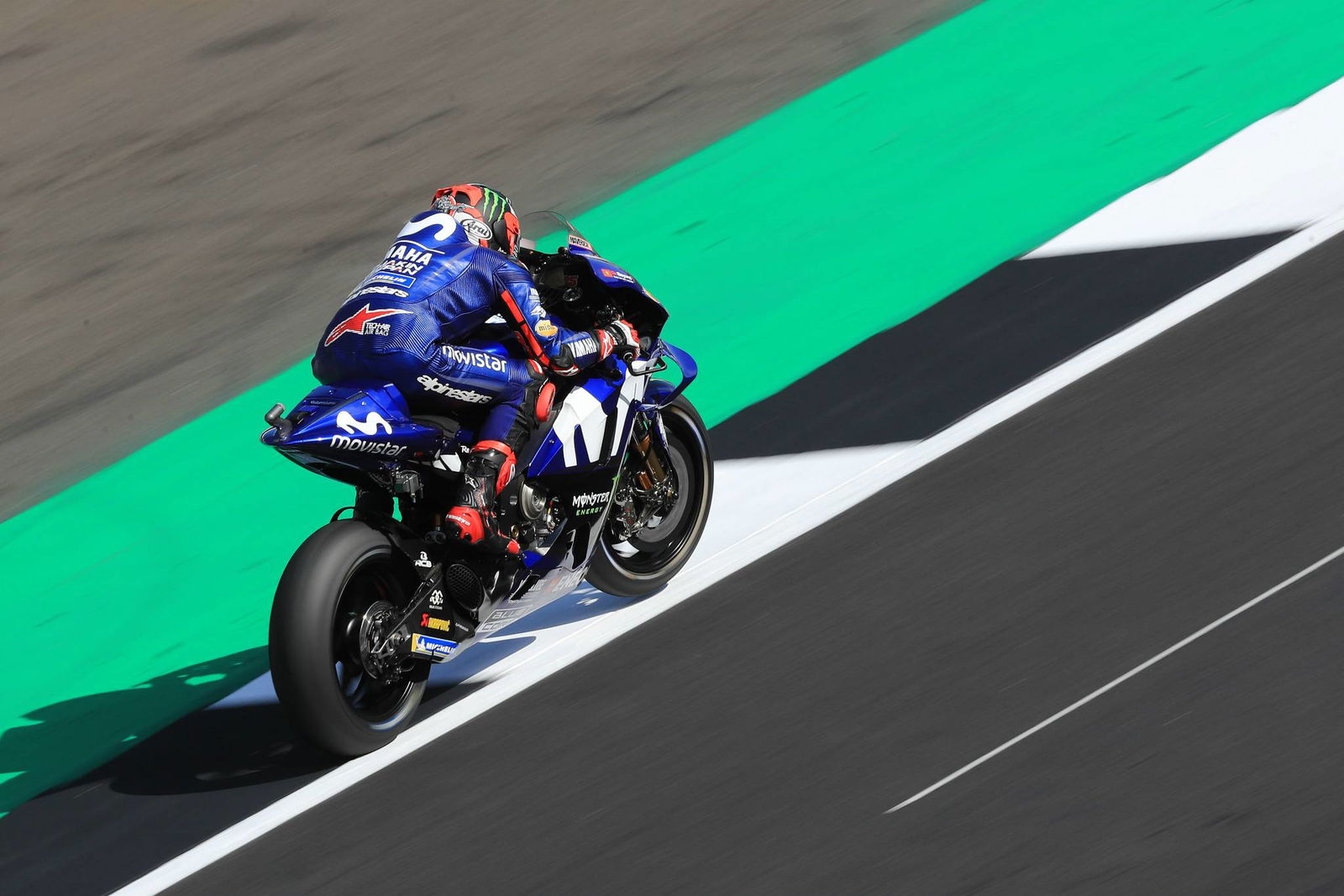MotoGP: Silverstone responds to track surface concerns
Silverstone Managing Director Stuart Pringle has contested claims the circuit’s new track surface was at fault for an incident-packed end to MotoGP FP4 that led to riders expressing concerns of the running of Sunday’s race in seriously wet conditions.
Three riders crashed at Stowe Corner in the closing minutes of the weekend’s final free practice session, including Tito Rabat, who suffered serious fractures to his right leg, while several other names avoided crashes and ran on.

Silverstone Managing Director Stuart Pringle has contested claims the circuit’s new track surface was at fault for an incident-packed end to MotoGP FP4 that led to riders expressing concerns of the running of Sunday’s race in seriously wet conditions.
Three riders crashed at Stowe Corner in the closing minutes of the weekend’s final free practice session, including Tito Rabat, who suffered serious fractures to his right leg, while several other names avoided crashes and ran on.
Aside from Rabat, each of those riders spoke of an excess of standing water on the Hangar Straight in those moments and described their machines aquaplaning at well over 100mph. MotoGP Race Director Mike Webb concluded those conditions to be “unraceable,” after organisers had brought Sunday’s race forward to 11:30.
On Saturday evening, work was well underway at the circuit’s two trouble spots (turn seven and eight) to aid the draining of standing water in the likelihood of the forecasted heavy rain arriving around noon on race day.
As Webb explained, “The problem we have in turn seven and eight is the natural drainage of the water on the track puts it on one place. We’re talking about things that we have done often before: making some cuts in the track to make it drain in a certain direction, to stop it forming a river on the track.”
And while Webb and a number of riders felt Silverstone’s new surface, laid in February, was a reason behind the high levels of standing water in what were exceptionally wet conditions, Pringle felt otherwise.
“It was a Biblical downpour,” said the Englishman of the rain toward the close of FP4. “Frustratingly we didn’t have an accurate measurement about how much rain fell in a very short period of time, but it was more like a monsoon you’d see in Malaysia than heavy, normal rain. So it was an exceptional cloud bit of a burst, made all the more peculiar by the fact that it wasn’t up here. The drainage on the circuit is very good.
“So we are happy that we are constantly on the drainage and improving it where we can. We did alter as part of the track works a small amount of some civil engineering. We did a bit of civil engineering work, but not on Stowe [turn seven, where the incident took place]. The curves remain the same.
“So if there was any change there, it was a middle essentially because everything is flush to the curbs. But we are in consultation, having a meeting a FIM. We’re taking some remedial action now, namely putting some shortcuts in to try and help channel the rain away. We actually have a new drain.”
On the charge the new surface was incapable of dispersing water in case of the heavy downpour, Pringle said, “It’s pretty good at throwing the water away most of the time. Not pretty good - it’s good. It’s good at throwing the water away the vast majority of the time. We have to deal with a wet circuit here very regularly.”
Most riders – and Race Director Mike Webb - felt otherwise, however. Yet to the circuit’s credit overnight works attempted to aid the draining process to avoid such a build up of standing water.
“We have a relentless program of maintenance and upgrading to this circuit,” said Pringle. “We’re constantly working away just tweaking where we need to. If we’ve got a problem, the nice thing is we’re pretty agile as a business. We’re pretty agile as a circuit. We’ve got experienced guys. If we see a problem, then we can react to it.
“So I don’t think this is going to be a problem in the future going forward, because I’m sure that there is an engineering solution to it that we can effect pretty quickly and efficiently.”
The Bumps
Through the weekend, riders have complained of excessive bumps, a feature that has remained despite the resurfacing which took place earlier in this year. Again, Pringle was keen to play this down. Admitting there were issues at four corners, he was keen to point out improvements in grip and consistency.
“I’ve had two riders speak to our motorcycle people in the business who have been extraordinarily complimentary about the surface and said there isn’t a problem.
“They say there’s a bump at Copse, which I know there is. I know about that one. There’s a bump at Abbey. I know about that. I know that one needs fixing. There’s those two, but I think there are two others. There’s one at Brooklands and one at Stowe. I think there are four things that need addressing.
“But they say that everything else is good. They said it’s fast, it improved. The grip is consistent. I know that Michael and I have had this conversation before, but the request from the FIM or the real problem was the inconsistency in grip.
“As seasoned observers of Silverstone, you all recall that we’ve had some quite significant financial challenges in recent times. So when we were asked to resurface about 38% of the track, broadly Stowe round to Abbey, between Abbey and Village through Farm Curve, that looked like a stretch.
“But actually I understood that if we really wanted to address the fundamental issue, which was the inconsistency in grip, that would only go so far. So we made what for us was a significant commitment to this.
“Bear in mind, this is one weekend of the year. We earn a lot more money out of cars and bikes, be it testing, track days, or events. But we did a full 3.66 mile resurface, 15 meters’ width, with the first available funds we’ve had in this business for many years.
“I’m deadly serious about my commitment to MotoGP taken seriously as a motorcycle racing circuit, not just a car racing circuit. So the number one thing was to provide a consistent grip for everybody, and that’s what we’ve done.
“We could debate all evening what the definition of dangerous is. I don’t really feel that I want to talk to you now in the heat of a weekend about that, but perhaps it’s a conversation we could have.
“I’m fearful that I could be hung out to dry on another thing that sounds like I’m criticizing the riders, and there’s no way I want to go anywhere close to that. But the reality is, this has got a grade one FIM license. It’s also got a grade one FIA license.
“We’ve got runoff as big as Brighton Beach in some places that the current FIM safety inspector says is grossly excessive and we could bring the barrier in in places. It doesn’t feel like a dangerous circuit, but I’m sitting in an office and I’m not sitting on a bike at 320kph.”

